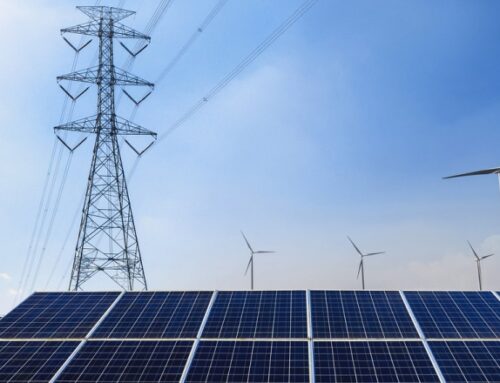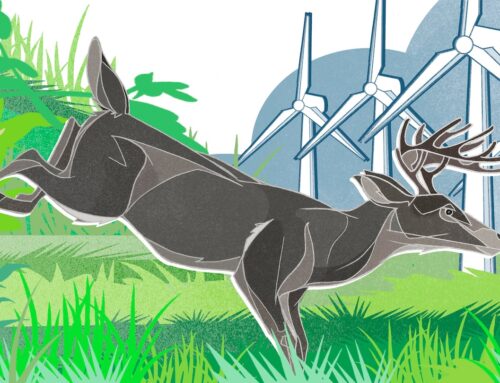Uruguay expands solar energy as electricity demand increases
October 1, 2025
With an electricity mix fed by approximately 94% renewable sources, Uruguay is already a decarbonisation pioneer. But while 46% of those sources are hydropower, 27% comes from the wind and 19% is sourced from biofuels, only 2% is provided by solar. To ensure this mix remains as clean as possible in the face of growing electricity demand, the next phase of Uruguay’s energy transition is about to begin: major solar expansion.
According to Arianna Spinelli, national director of energy at Uruguay’s Ministry of Industry, Energy and Mining (MIEM), “models have been developed in the country to draw up generation expansion plans that indicate the most suitable sources to be installed. These show future expansions in electricity generation should mainly come from photovoltaic and wind power.”
A 2019 report by the International Renewable Energy Agency described Uruguay’s geographical and temporal characteristics as making solar and wind highly complementary: solar power generation peaks during the day, while wind peaks at night. Spinelli says this is a crucial combination in cementing the resilience of Uruguay’s electricity system.
Uruguay’s current installed wind power capacity is 1,500 megawatts (MW) and its photovoltaic power capacity is 300 MW. Spinelli says the expansion plan developed by her department envisages the installation of an additional 1,100 MW of solar capacity by 2040.
Two expansions are already underway, which are set to supply Uruguay’s grid with at least another 100 MW of solar power by 2026: a 25 MW solar plant planned for Punta del Tigre, along San José’s coast in southern Uruguay, which is scheduled to begin operating from July 2026; and a 75 MW solar park to be developed in the east at Melo in Cerro Largo, operating from October.
Dialogue Earth spoke to Darío Castiglioni, director of the National Administration of State Power Plants and Electrical Transmission (UTE). He says the projects have required a combined investment of USD 91 million, and are in response to solar power becoming an increasingly affordable energy source.
National sustainability
Uruguay’s environment minister, Edgardo Ortuño, tells Dialogue Earth that the promotion of renewable energy is a “fundamental part” of national sustainable development. He therefore hopes the incorporation of renewables “will continue to grow”, with the aim of advancing the second energy transition towards decarbonisation by 2050.
In 2021, Uruguay established a Long-Term Climate Strategy to hit its target of being carbon neutral by 2050. This necessitates an energy transition, the first phase of which centred on creating a renewables-powered electricity matrix. The second phase has three pillars: energy efficiency, electromobility and the electrification of demand. This entails decarbonising transport and industry, boosting energy storage, and becoming a regional hub for green hydrogen, meaning hydrogen produced entirely by renewable energy. Uruguay therefore needs more of these sources, and it is looking to solar.
“We plan to make significant progress in sustainable mobility at the family level and in public transport with electric mobility,” says Ortuño, “but also in road freight, river and air transport, which means advancing in the development of green hydrogen, which also represents a step forward in the expansion of solar energy in the country.”
Ramón Méndez is the executive director of the Ivy Foundation, an NGO dedicated to the energy transition, and president of REN21, a renewable energy advocacy network. He tells Dialogue Earth that Uruguay’s first energy transition was initially driven by climate change and environmental concerns. Today, however, it is driven by economics.
“Renewables are the cheapest sources and also make you independent of fluctuations in fossil fuel prices,” he says. “Electricity produced with photovoltaic panels is cheaper than that produced with wind turbines.”
Projects underway
The Punta del Tigre project was awarded to a consortium comprised of the Spanish company Prodiel Energy and Uruguay’s Teyma in October 2024, serving as a pilot to evaluate foreign participation in Uruguayan solar.
The same consortium was announced as the operator of the larger, 138,000-panel Cerro Largo project earlier this month, after being selected by the government over eight other proposals. The Melo station attracted two other foreign bidders: Peru’s ABCD Trading, and the Power Construction Corporation of China.
According to the academic Rodrigo Alonso, who co-directs both the Uruguayan Renewable Energy Association (AUdER) and the Solar Energy Laboratory (LES) at Montevideo’s University of the Republic, China’s interest in the Uruguayan solar market is purely commercial: “For cost reasons, practically everything that is installed in Uruguay comes from China. It dominates the solar market by several orders of magnitude, both in manufacturing production and in its own installations worldwide.”
Alonso confirms Punta del Tigre and Cerro Largo will both use Chinese solar panels. Some Chinese companies are also involved in works related to Uruguay’s electricity transmission systems.
As well as cheaper parts, Méndez says Chinese entities provide financing at very favourable rates, which makes the final electricity price more affordable for consumers. He adds that the solar panel arrangement has been generally popular because the installation, civil works and subsequent electricity supply have all remained in the hands of the state, to the benefit of Uruguay’s economy.
Castiglioni says overseas involvement in such projects is common, because UTE cannot provide the requisite scale of investment alone. Considering China’s leading role in the development of green technologies, Castiglioni adds, its investments are viewed positively, and “although Uruguay may be a very small market for China, the country is like a gateway to the region” – if this relationship proves fruitful, other Latin American countries are more likely to continue working with China on green development.
Environmental impacts
The installation of these solar parks could have various environmental impacts on the surrounding areas. For example, says Méndez, they occupy a lot of land – especially in comparison to wind farms. On the other hand, Spinelli says “the currently installed capacity occupies 0.0033% of Uruguay’s area. Therefore, even if the installed capacity is multiplied several times over, these are not significant areas for a country with a low population density.”
As for wind farms, Méndez acknowledges that the turbines have a greater visual impact on the landscape, generate noise and cause strobing as they rotate, and pose a risk to migratory bird corridors.
But both experts agree these drawbacks are infinitely smaller than those generated by other types of technology, such as fossil fuels. When it comes to new solar parks, Méndez says “in general, the receptivity of the neighbours has been very positive”.
Increased demand
The outlook for electricity demand in Uruguay for the next decade is significant growth. In addition to a historic annual growth rate of 2%, sectors such as electromobility, the incipient development of green hydrogen, and the installation of new data centres are increasingly driving local electricity consumption and making it crucial to find new generation alternatives.
According to Noelia Medina, deputy secretary and coordinator of the World Energy Council’s Future Energy Leaders programme, and an economist who specialises in finance, energy economics and regulation, there are already signs that large-scale projects related to these sectors will appear in Uruguay – and these could make heavy demands on Uruguay’s electricity grid.
Spinelli says that in 2024, the electricity demand of the country’s grid, the National Interconnected System, amounted to 12.2 terawatt-hours. This does not include demand from data centres or hydrogen derivative projects, which could amount to cumulative installations of 1 gigawatt of photovoltaic power by 2030.
These projections are also reflected in the MIEM’s 2024-2043 Electricity Generation Expansion Plan, published in March. Among its main points, the plan anticipates national demand reaching 14 terawatt-hours per year from 2035 onwards. It says maintaining adequate supply will require installing, by 2043, approximately 2,100-2,420 MW of new wind energy capacity and 1,130-1,375 MW of solar.
Spinelli says Uruguay’s grid is well equipped to absorb this extra wind and solar capacity, adding that work on transmission systems has been planned and much has already started. “It should not be a problem to connect wind and photovoltaic generation in the coming years,” he says. Castiglioni confirms that UTE has made a “very strong” investment in energy distribution.
International financing and exports
Because domestic options can be limited, Castiglioni says the search for international financing “is always on the agenda” – from, for example, organisations such as the Green Climate Fund (GCF) and the Inter-American Development Bank. Spinelli confirms that the MIEM, as well as other government actors, are “attentive to climate financing opportunities”, with international cooperation projects already underway.
Méndez, himself a former member of GCF’s board of directors, says such projects are of interest to the fund, but clarifies that it usually works on a “much larger” scale. He says there are still “multiple options for Uruguay to obtain cheap financing”, probably through a combination of equity financing and loans.
As for how these projects could contribute to regional energy integration and exports, Spinelli says Uruguay is “already working at the regional level to promote greater energy integration and to better manage the availability of low-cost electricity,” which neighbouring countries will have as they move towards an increasingly renewable electricity matrix.
“In 2022, energy exports reached almost USD 400 million, close to 1% of GDP, so it is clear that energy is now a non-traditional export product for Uruguay,” he says.
Search
RECENT PRESS RELEASES
Related Post






